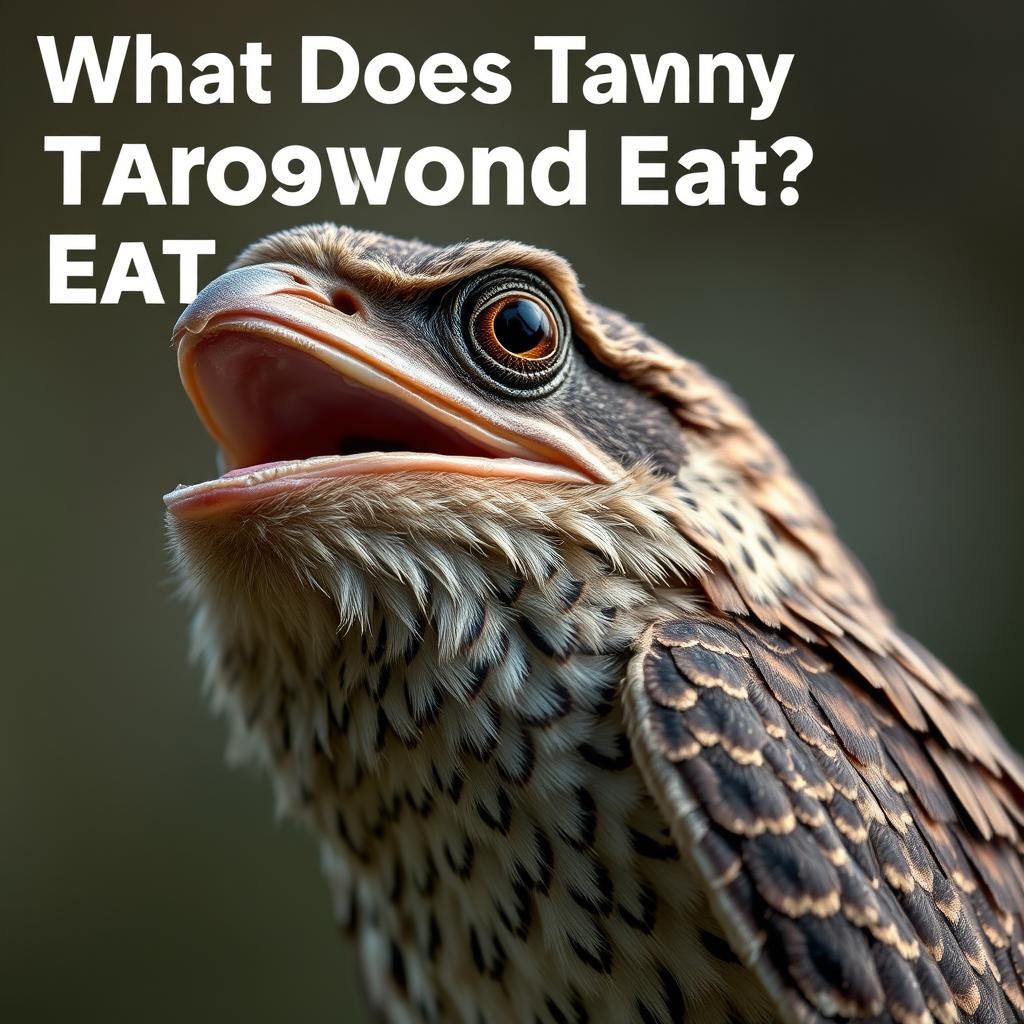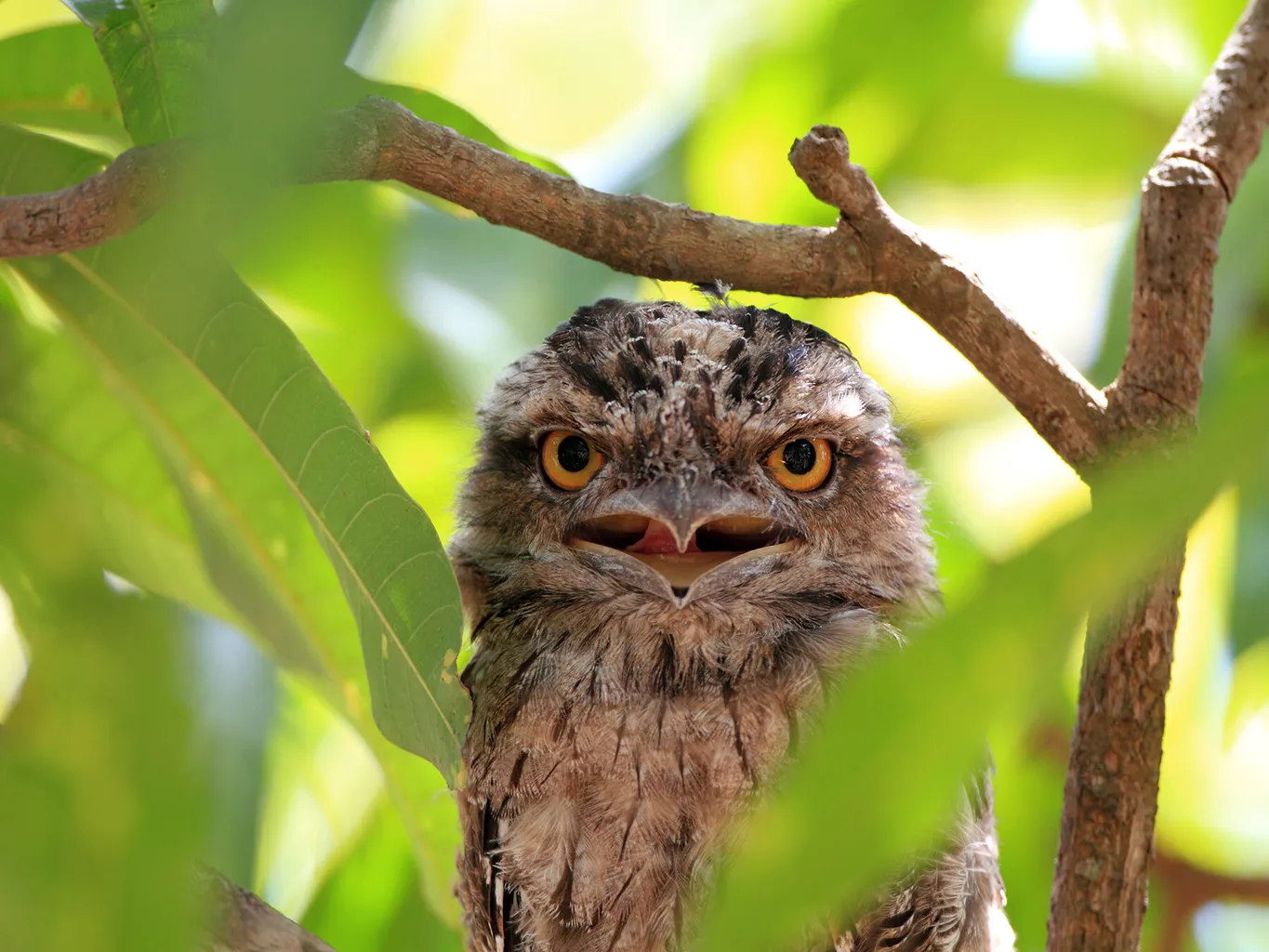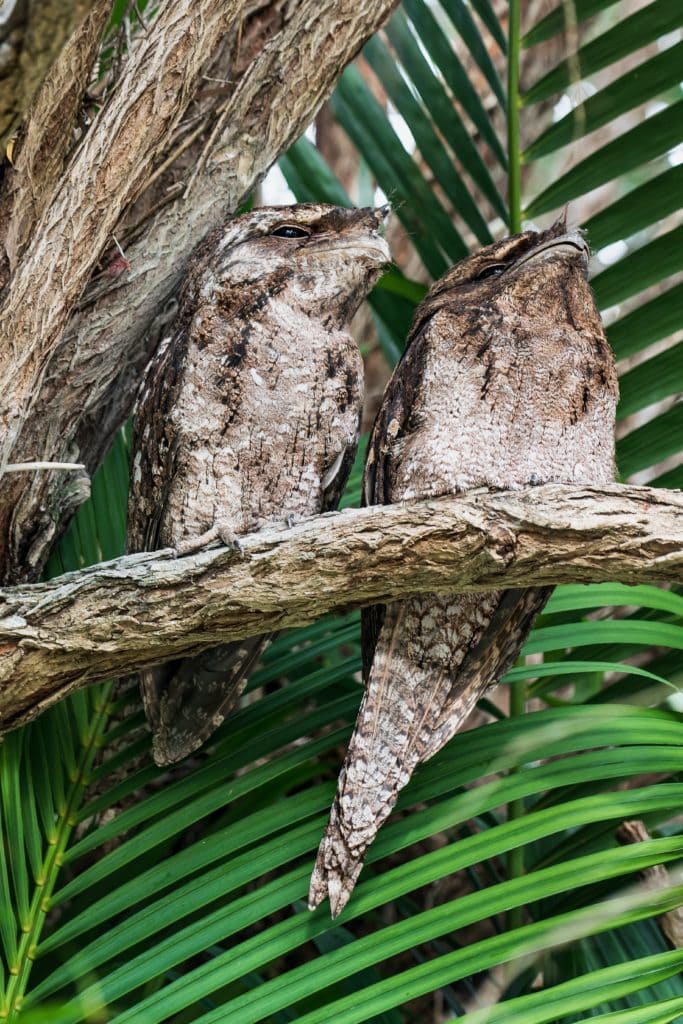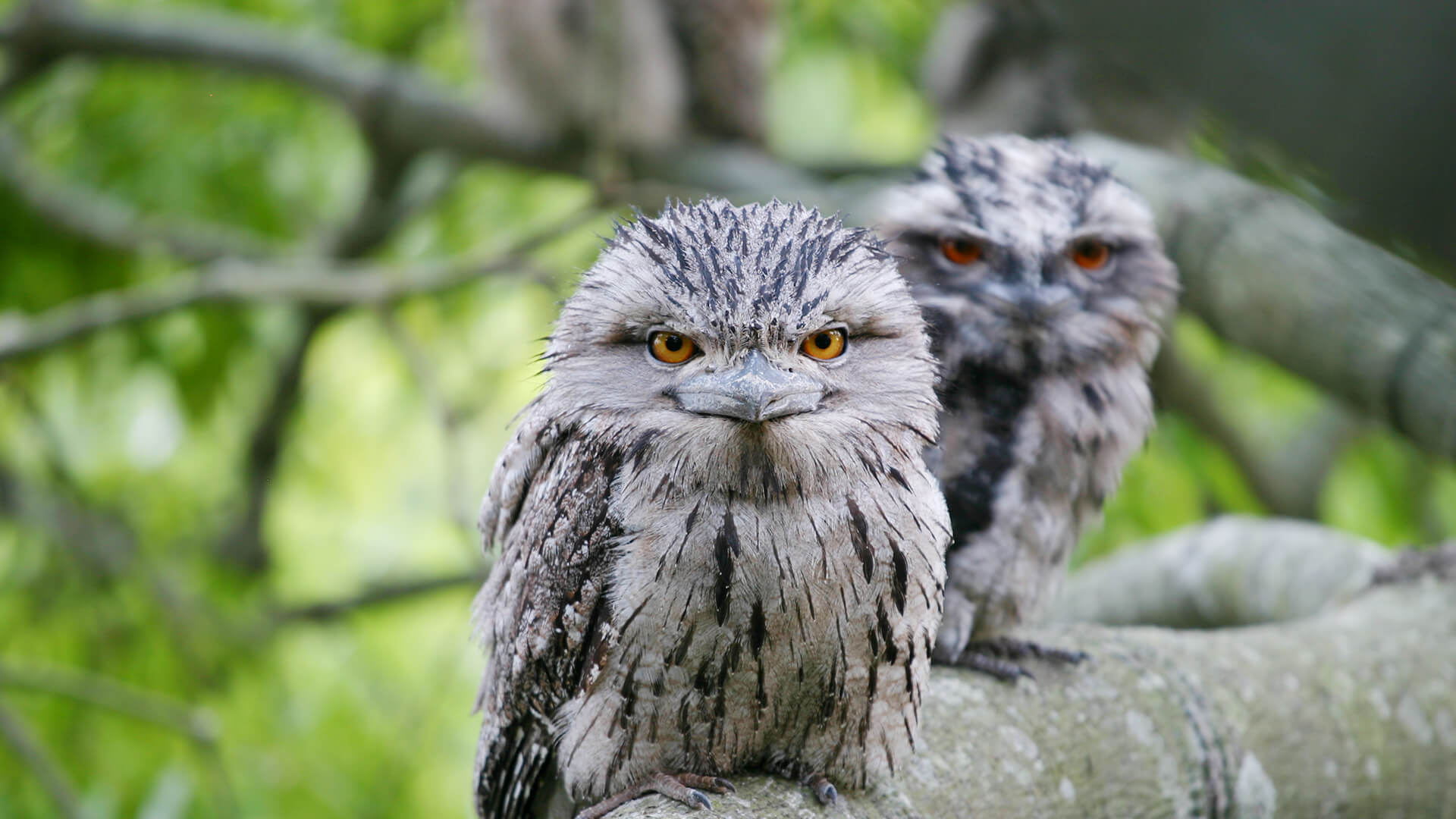What Does a Tawny Frogmouth Eat? A Comprehensive Guide to Their Diet and Feeding Habits

The tawny frogmouth, a unique and fascinating species native to Australia, has a diet that reflects its nocturnal lifestyle and specialized hunting techniques. Known for their exceptional camouflage and large, wide mouths, these birds primarily feed on a variety of prey found in their forest habitats. In this comprehensive guide, we will explore the dietary preferences of tawny frogmouths, examining the types of animals they consume, their hunting behaviors, and how their feeding habits adapt to seasonal changes. Understanding what tawny frogmouths eat not only sheds light on their ecological role but also highlights the importance of preserving their natural habitats.
What Does a Tawny Frogmouth Eat?
The tawny frogmouth, a unique nocturnal bird native to Australia, primarily feeds on a variety of insects and small animals. Their diet predominantly consists of moths, beetles, and other arthropods, which they catch using their remarkable camouflaging abilities and swift reactions. These birds have a distinctive feeding technique; they often wait motionless on a branch, blending seamlessly with their surroundings, before pouncing on unsuspecting prey that ventures too close. In addition to insects, tawny frogmouths may consume small mammals like mice and small reptiles. Their eclectic diet allows them to thrive in various habitats, ensuring they can find ample food sources throughout the year.
Diet Composition of Tawny Frogmouths
The diet composition of tawny frogmouths is diverse, primarily featuring insects due to their abundance in the wild. These birds have adapted to consume a wide range of invertebrates, which comprise the bulk of their diet. They also supplement their intake with small vertebrates, allowing them to be opportunistic feeders. This broad spectrum of food allows them to adjust their feeding habits based on availability, which is crucial for survival in fluctuating environments.
Common Prey Items
Tawny frogmouths commonly prey on moths, beetles, and various grasshoppers. These insects are typically nocturnal, providing plenty of hunting opportunities for tawny frogmouths, which are also active at night. Occasionally, they include small rodents and reptiles such as skinks or geckos in their diet, especially when insect populations are low. Their ability to take down various prey items demonstrates their adaptability and efficiency as predators.
Feeding Habits and Techniques
Tawny frogmouths utilize a unique feeding strategy characterized by their remarkable camouflage. By perching silently on branches during the night and blending in with their surroundings, they can ambush their prey with precision. When an insect comes close enough, the tawny frogmouth launches an attack with its beak, effectively capturing the target. This stealthy approach minimizes energy expenditure while maximizing hunting success, making them highly effective nocturnal predators.
Impact of Seasonal Changes on Diet
Seasonal changes significantly influence the diet of tawny frogmouths, particularly the availability of insects and small mammals. During warmer months, when insect populations swell, tawny frogmouths can find ample food resources, allowing them to thrive and reproduce more effectively. Conversely, during colder months or extended dry seasons, their diet may shift, leading them to rely more on available small vertebrates. This flexibility in diet allows them to adapt to varying environmental conditions.
Role in the Ecosystem
As a predator, the tawny frogmouth plays a vital role in maintaining the balance of its ecosystem. By controlling insect populations, particularly species that may harm crops or disrupt natural environments, tawny frogmouths contribute to a healthier ecological system. Their predation helps sustain the populations of various insects, preventing any one species from overwhelming the habitat. Thus, they are an integral part of the food web, supporting biodiversity and ecological stability.
| Prey Type | Examples | Feeding Pattern |
|---|---|---|
| Insects | Moths, Beetles, Grasshoppers | Nocturnal hunting |
| Small Mammals | Mice, Bats | Opportunistic |
| Small Reptiles | Skinks, Geckos | Occasional prey |
What do tawny frogmouth eat?

The tawny frogmouth (Podargus strigoides) is a unique, nocturnal bird native to Australia and New Guinea. Their diet primarily consists of a variety of invertebrates and small vertebrates, which they hunt at night. These birds are well-adapted for a life of stealth and camouflage, allowing them to remain hidden while waiting for prey.
Diet Composition
The tawny frogmouth's diet mainly includes:
- Insects: They consume a wide range of insects, such as beetles, moths, and crickets, which form a substantial part of their diet.
- Small vertebrates: Occasionally, they may eat small mammals, reptiles, and even small birds.
- Worms and slugs: These soft-bodied creatures are also included in their diet, especially when other food sources are scarce.
Hunting Techniques
Tawny frogmouths employ various strategies to catch their prey:
- Camouflage: Their plumage resembles tree bark, allowing them to blend into their surroundings and ambush unsuspecting prey.
- Stillness: They often remain motionless for extended periods, waiting for the right moment to strike.
- Silent Flight: Their flight is almost silent due to specialized feather structures, enabling them to hunt undetected.
Feeding Habits
These birds have unique feeding habits that suit their nocturnal lifestyle:
- Nocturnal feeding: Tawny frogmouths are primarily active at night, taking advantage of low-light conditions to hunt.
- Low perch hunting: They prefer to hunt from low perches, swooping down to catch prey from the ground or vegetation.
- Regurgitation: Like many birds, tawny frogmouths regurgitate indigestible parts of their food, such as exoskeletons of insects.
Geographical Variations in Diet
The diet of tawny frogmouths can vary significantly based on their location:
See also:
- Urban environments: In cities, they may adapt by feeding on introduced species or pests.
- Rural areas: They often consume native insects and small animals available in their habitat.
- Seasonal changes: Their diet can shift with seasonal availability of prey, focusing on certain insects during specific times of the year.
Importance of Diet for Ecosystem
The tawny frogmouth's dietary habits play a significant role in their ecosystem:
- Pest control: By consuming numerous insects, they help regulate insect populations, reducing pests.
- Food web dynamics: As both predator and prey, they contribute to the complexity of the food web.
- Indicator species: Their health and abundance can indicate the overall health of their environment.
What does it mean if a tawny frogmouth visits you?

If a tawny frogmouth visits you, it could carry several meanings, largely shaped by various cultural and spiritual beliefs. This unique bird, known for its exceptional camouflage and quiet demeanor, often symbolizes wisdom, intuition, and the importance of observation. The significance of such a visit may also relate to personal intuition, guidance, or a call to notice something in your life that requires attention. It could represent a message from the spirit world, encouraging you to seek clarity or deeper understanding.
Symbolism of the Tawny Frogmouth
The tawny frogmouth is rich in symbolism across different cultures, often linked to night and mystery. Its ability to blend into its surroundings highlights the notion of being discreet and perceptive. These characteristics can mirror your need to observe situations without immediate involvement. The visit may symbolize:
- Introspection: Encourages self-reflection and understanding of your inner feelings.
- Observation: Reminds you to pay attention to subtle details in your environment.
- Calmness: Represents a need for tranquility and patience in life.
Connection to Nature
When a tawny frogmouth comes into your life, it can signify a deeper connection to nature. This bird's presence may indicate that you should spend more time outdoors and embrace the natural world. Engaging with nature can lead to spiritual growth and rejuvenation. Consider the following:
- Nature's lessons: Each element in nature offers a lesson, and the frogmouth's visit may highlight your need to learn from your surroundings.
- Rejuvenation: Time spent in nature can refresh your spirit and enhance your overall well-being.
- Balance: Encourages finding equilibrium between your inner and outer worlds.
Messages from the Spirit World
In many cultures, animals are seen as messengers from the spirit realm. The tawny frogmouth might be acting as a spiritual guide, delivering important advice or insights. Its unusual appearance could be interpreted as a call to engage with spiritual practices or delve into your intuition. Key points include:
- Guidance: It may help navigate difficult decisions, urging you to trust your instincts.
- Awareness: Increases sensitivity to messages from your subconscious or intuitions.
- Protection: Represents a protective presence, offering reassurance in times of uncertainty.
Emotional Healing
The appearance of a tawny frogmouth might signify the need for emotional healing. It could suggest that there are unresolved feelings that require your attention. This bird evokes themes of calmness and understanding, serving as a reminder to address your emotions in a constructive way. Focus on these aspects:
- Self-awareness: Encourages acknowledgment of feelings and experiences.
- Healing: Signals the beginning of a healing journey, prompting you to seek support if necessary.
- Transformation: Represents the potential for growth through emotional challenges.
Encouragement to Slow Down
The tawny frogmouth is known for its calm nature and stillness, which may serve as a metaphorical nudge for you to slow down and embrace a more mindful approach to life. Its visit could indicate that it's time to take a step back from your busy routine and reflect. Important considerations include:
- Meditation: Encourages practicing mindfulness and finding stillness in your daily life.
- Reflection: Invites contemplation on personal goals and priorities.
- Restoration: Highlights the need to recharge physically and emotionally.
What is the lifespan of a tawny frogmouth?

The lifespan of a tawny frogmouth (Podargus strigoides) typically ranges from 5 to 10 years in the wild. However, in captivity, where they are protected from predators, have a stable food supply, and receive regular veterinary care, they can live longer, often exceeding 10 years. Some individuals have been reported to live up to 20 years when kept in a controlled environment.
Lifespan in the Wild
In their natural habitat, tawny frogmouths face various threats that can affect their lifespan. These include:
- Predation: Young and vulnerable tawny frogmouths are at risk from predators such as foxes and eagles.
- Environmental Hazards: Habitat destruction and human encroachment can lead to reduced nesting sites and food availability.
- Food scarcity: Changes in local ecosystems can affect the abundance of insects, which are a primary food source for these birds.
Lifespan in Captivity
When tawny frogmouths are kept in zoos or wildlife reserves, their lifespan significantly increases. This is due to several factors:
- Regular veterinary check-ups: Captive birds receive healthcare that helps prevent diseases.
- Stable diet: They are provided with a consistent and nutritious diet that meets their dietary requirements.
- Protection from predators: They are kept safe from natural predators that could threaten their survival in the wild.
Factors Influencing Lifespan
Various factors can influence the lifespan of tawny frogmouths, both in the wild and in captivity:
See also:
- Genetics: The genetic background of an individual can play a significant role in its longevity.
- Health and diet: A balanced diet that mimics their natural food intake supports better overall health.
- Environment: Creating a stress-free environment in captivity contributes to longer lifespans.
Reproductive Age and Lifespan
The reproductive maturity of tawny frogmouths is reached at around two years of age, and their ability to reproduce can impact their lifespan:
- Nesting behavior: Successful nesting can ensure the continuation of their lineage, impacting population longevity.
- Parental care: Adults involved in rearing chicks might experience increased stress, potentially affecting their overall lifespan.
- Breeding season: Stress during breeding periods can take a toll on their health if conditions are not ideal.
Conservation Status and Its Impact
The conservation status of tawny frogmouths may also indirectly affect their lifespan through various measures:
- Protection laws: Conservation efforts that protect their habitats help secure longer lifespans.
- Awareness programs: Education and awareness can lead to habitat restoration and improved living conditions.
- Research efforts: Ongoing research helps identify threats and mitigation strategies to improve their survival rates.
Is a tawny frogmouth a kookaburra?

The tawny frogmouth and the kookaburra are often confused due to their similar habitats and rustic appearances, but they belong to different families within the avian world. The tawny frogmouth (Podargus strigoides) is not a kookaburra, as kookaburras belong to the genus Dacelo. While both are native to Australia and share some ecological traits, they are distinct species with varying characteristics, behaviors, and taxonomic classifications.
Taxonomic Classification
The tawny frogmouth and kookaburra belong to separate families in the avian classification system.
- Tawny Frogmouth: Part of the family Podargidae, known for their camouflaged plumage and nocturnal habits.
- Kookaburra: Part of the family Alcedinidae, recognized for their vibrant calls and daytime activities.
- This difference in taxonomy highlights their evolutionary paths and adaptations to different ecological niches.
Physical Characteristics
Both birds exhibit unique physical traits that reflect their adaptations to their environments.
- Tawny Frogmouth: They have a stout body, broad head, and feather patterns that resemble tree bark, allowing them to blend in with their surroundings.
- Kookaburra: Characterized by a more robust beak, they feature a striking blue and white plumage, which aids in recognition among their species.
- These differences in appearance not only help with camouflage but also in attracting mates and establishing territory.
Habitat and Distribution
Both tawny frogmouths and kookaburras share similar habitats but occupy different ecological roles.
- Tawny Frogmouth: Prefer bushland, open forests, and woodlands, often found sitting motionless on tree branches.
- Kookaburra: Commonly found in eucalypt forests and urban areas, often perched prominently while hunting.
- This distribution shows how both species utilize similar environments but adapt differently for hunting and nesting.
Feeding Habits
The tawny frogmouth and kookaburra have distinct diets determined by their foraging behaviors.
- Tawny Frogmouth: Primarily nocturnal, they feed on insects, small mammals, and other invertebrates, capturing prey in the dark.
- Kookaburra: Diurnal feeders, they hunt for reptiles, small mammals, and even other birds. They are known for their hunting prowess and can often be seen diving down to catch prey.
- These different feeding habits allow them to coexist in the same environments without direct competition.
Vocalizations
Vocal behavior is another area where tawny frogmouths and kookaburras differ markedly.
- Tawny Frogmouth: They produce soft, low calls that resemble the croaking of a frog, enhancing their nocturnal camouflage.
- Kookaburra: Famous for their loud, laughing call, these vocalizations serve to establish territory and communicate with other kookaburras.
- This difference in vocalization reflects their respective lifestyles and social structures within their habitats.
Questions from Our Readers
What does a tawny frogmouth eat?
A tawny frogmouth primarily eats insects, particularly moths and beetles, as well as small vertebrates like frogs and small mammals. Their diet can vary depending on the availability of prey in their environment.
Do tawny frogmouths hunt at night?
Yes, tawny frogmouths are nocturnal hunters, which means they are most active during the night. They have excellent night vision, allowing them to effectively locate and catch their prey in the dark.
How do tawny frogmouths catch their food?
Tawny frogmouths rely on their camouflage to remain hidden while they wait for prey to come close. When an opportunity arises, they quickly pounce on their target using their strong beaks to capture and consume it.
Tawny frogmouths are generally solitary or found in pairs, particularly during the breeding season. They do not form large flocks and prefer to hunt and roost alone or with their mate, reinforcing their territorial behavior.
See also:

If you want to read more articles like What Does a Tawny Frogmouth Eat? A Comprehensive Guide to Their Diet and Feeding Habits, we recommend you check out our Ninguna de las categorías es adecuada. category.
Leave a Reply
Related Articles